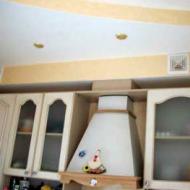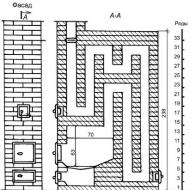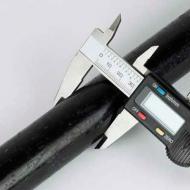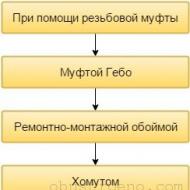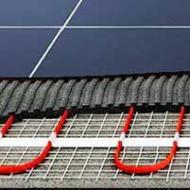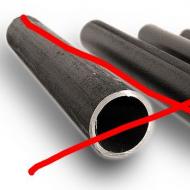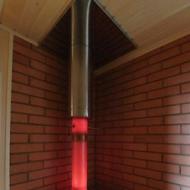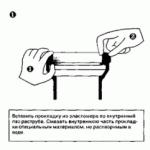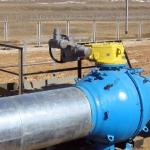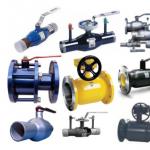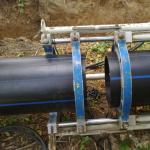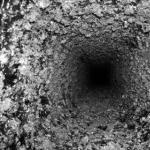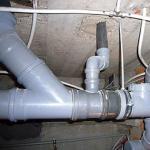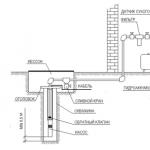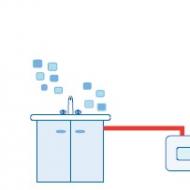
How to choose the volume of the water heater. How to choose the right volume of storage water heater
One of the most asked questions of buyers when choosing a storage water heater is:
- And what volume should be a water heater?
The question is actually correct and very important. In order to respond to it, the seller-consultant will have to ask the buyer a few questions and only then can give him the right answer.
Since you are reading this article, then you are either a buyer who does not want to rely on the professional opinion of sellers and does not always want to determine the right amount of water heater, or you are a seller who wants to fill the gaps in his professional skills. In any case, let's try to deal with this issue together.
First, let's formulate the questions, the answers to which will help to determine the correct volume of the storage water heater:
Question one:
- How many people in the family will use hot water at the same time?
And in fact, if, for example, for a short time, i.e. in a row, several people in your family are going to take a shower, then the amount of hot water should be enough for this procedure. Therefore, a water heater with a small volume is not suitable for you.
Question two:
- Which consumers will be powered by a storage water heater?
In this case, by the word "consumers" I mean not people, but hot water points, i.e. a shower, a kitchen faucet, a washbasin in the bathroom, etc. For example, if hot water is used only for washing dishes in the kitchen, then it makes no sense to purchase a large-capacity water heater.
Question three:
- Where will the water heater be installed?
It would seem that the answer to this question has nothing to do with the required volume of hot water, but since the size of the storage water heater itself depends on this volume, it is more than desirable to receive this answer. After all, you will not be able to install a large-capacity storage water heater under the sink in the kitchen.
Question four:
- When will the water heater be used? At what time of the year?
The fact is that in winter the temperature of cold water is much lower than in summer. Therefore, under all equal conditions, hot water will be used approximately 20% more.
Here, in fact, and all the major issues that should help in choosing the right amount of storage water heater.
And now let's take advantage of the wonderful drawings I borrowed from the Ariston Thermo Group water heater catalog, which clearly shows how much the storage water heater should be, depending on the number of people using hot water at the same time.
Water heater with a volume of 10-15-30 liters.

As can be seen from the picture, a water heater of this volume will be sufficient only for one person who uses either a sink or a shower.
Water heater with a volume of 50-65-80 liters.
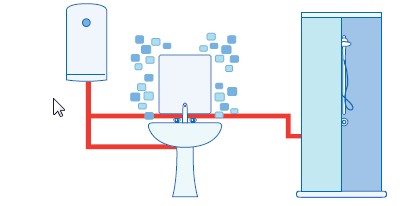
Water heater with a volume of 80-100 liters.

Water heater with a volume of 100-120 liters.

Water heater with a volume of 120-150 liters.

I hope that you are oriented? 🙂
And now a few words from myself, so to speak, from my own experience of using a storage water heater at home.
My house has a water heater of 50 liters, a family - 3 people, of which two adults and one child 11 years old. I can say with certainty that with proper use, we are quite short of such a volume of water heater.
What does it mean when used correctly? - you ask.
A rule here really is, and here are a couple of them:
- Take a shower you need not in a row, one after another, and with a break at least half an hour.
- When taking a shower, turn off the water when not needed. Those. At the moment when you are soaped with a washcloth, it is simply not permissible to spend hot water. By the way, in order for it to be more convenient to do, I put a special mixer, on which the shower-cock is switched by turning. Inside the mixer is a ball-shaped shutter that, when rotated by 180%, delivers water either to the tap or to the shower hose. But most importantly, if you turn this switch to the middle position by 90%, then the water is completely blocked. Thus, it is not necessary to regulate the temperature of the water every time it is switched on again. Very comfortably! I advise 🙂
The most difficult thing, which is almost impossible to achieve (in any case - I never did) is to force my child to comply with the second rule. Well, she does not want to turn off the water and everything ...
Attention! For fans of bathing, my method of using a water heater is hardly suitable. Although taking into account the fact that approximately 100 - 120 liters of warm water are required in a standard bath, 50 liters of boiling water should be enough.
I hope I could help with the choice.
Electric storage water heaters have firmly entered our life and are coping well with the assigned task of providing apartments and houses with hot water. Today, retail chains offer such a large range of electric boilers that from the choice, as the saying goes, eyes run out. Let's look at the main criteria and nuances of choosing a storage water heater, as well as review the popular models.
When choosing a storage water heater, first of all it is necessary to determine the required volume of the tank. After all, an insufficient volume of capacity will bring inconvenience in the form of waiting for water heating after each member of the family who took a shower. A tank larger than required will use an unjustified amount of electricity to maintain the required water temperature.
To determine the required volume of capacity, there are different statistical tables, but it should be noted that each person is individual, like his needs for hot water. Therefore, not always the statistics coincide with the truth.
To calculate the required amount of warm water, one can use formula Qв = Qh × tср × Vв, where:
- Qh is the number of family members;
- Tcp is the average time that takes to take a shower;
- Vв - the volume of water that pours out of the shower head per minute.
If the last figure is an average of 6 liters per minute, the number of people in the family is 3, and the time that takes to take water procedures is 8 minutes, then we get QB = 3 × 6 × 8 = 144 liters.
But it is worth noting that hot water is diluted with cold, and the average mixing ratio is 0.7. This means that per liter of hot water is mixed 0.7 liters of cold.
As a result, the required volume of the water heater will be equal to Vв = Qв × Uсм = 144 × 0,7 = 100,8 liters. Rounding this figure, we can say that a family of 3 people is quite suitable boiler with a volume of 100 liters. By the same calculation it is easy to calculate that a family of 4 people needs a boiler with a volume of about 150 liters.
This calculation does not take into account the small water consumption for washing hands and dishes or other household needs. It is believed that the volume of the tank, providing alternate bathing of all members of the family, without difficulty will provide hot water with other water procedures.
Calculation of the volume of the water heater (video)
Capacity of storage water heater
When choosing a boiler, it should also be understood that the time of heating the water in the tank directly depends on the capacity of the boiler. Most often household electric water heaters have a power from 1.5 to 3 kW. But there are also models designed for high power. They have in their design two or more heaters. In such devices, one heating element works to maintain the water temperature, and all electric heating elements are switched on to quickly heat the water.

The Thermex 80 SPR-V water heater, having a power of 2.5 kW, is able to heat 80 liters in 1.5 hours
Of course, the device described above is very convenient, but the power supply of not all homes can withstand the operation of a high-capacity water heater. For example, electrical wiring in new buildings is designed to connect 7-10 kW, and the electric grid in the houses of the old building is designed only for a total connection of 3-4.5 kW.
Again, the rate of water heating directly depends on the capacity of the boiler. Thus, Thermex 80 SPR-V with a power of 2.5 kW will heat the 80-liter tank in 1.5 hours, while the Ariston (Ariston) ABS 80V heater with a capacity of 1.5 kW will spend on heating the same 80 liters water just over 3 hours.
Design features
To ensure that the chosen device has served for more than one year, it is necessary to pay great attention to its quality and material of manufacture. Tap water adversely affects the boiler from the inside, so many manufacturers resort to covering the tank with a protective compound.
The optimal solution in this matter was the glass porcelain, the capacities covered by it are cheap, but durable. And manufacturers for such devices give from 3 years of warranty service. An example of such a boiler can serve as a water heater Thermex (Thermex) 80 SPR-V at a price of $ 170.
Glass ceramics has also proven itself as a protective coating against the influence of an aggressive environment. The price of such devices is also low, but it is worth knowing that the glass-ceramic coating will increase the weight of the boiler while reducing the service life. An example of a boiler with a glass-ceramic coating can be a water heater Bosch ES 100-5E with a cost of $ 200.

Some manufacturers cover the tank with enamel, but it is difficult to call such a solution successful. Although the price of such a boiler is the lowest, but several years of use of such a device will cause the tank of the water heater to become unusable. An example of a boiler with an enamel tank is a water heater Ariston ABS 80V at a cost of about $ 130.
Electric heaters made of stainless steel and titanium coated are the most durable. Manufacturers give on similar water heaters from 7 years of a guarantee. The cost of these water heaters, respectively, is several times higher than the price of glass-ceramic coated boilers. An example of a boiler with a stainless steel tank is a water heater Electrolux (Electrolux) EWH 80 for about $ 300.
Also, the effect of tap water affects the heating element of the tank. There are wet and dry types of heating elements. The first variant contacts directly with water, as a result of which it undergoes corrosion. Therefore, a wet TEN requires regular repair and replacement, while a dry TEN is insulated from water and is more practical. The price for a boiler with a dry TEN is much higher than the cost of one's colleague, but for installation in an apartment it is better to give preference to such a boiler.
Shape and location

To date, water heaters of storage type have various forms: cylindrical, oval, rectangular or more flat. In addition, boilers are of a horizontal and vertical type of arrangement. Note that the vertical models have a lower position of the nozzles, and the horizontal ones have a lateral arrangement. In this case, modifications are possible with both left and right connections.
Also pay attention to the way to fix the device. After all, not all walls are able to withstand water heaters, the volume of which is more than 80 liters. For example, in the presence of foam concrete walls, it is better to choose a floor model of the boiler.
Therefore, before making the final choice of the water heater, it is necessary to think carefully about its future location, and starting from this, choose the shape, location and fixing of the boiler.
Useful tips on how to choose the right water heater for an apartment or a country house
Wiring diagram of a storage water heater to a water pipe (video)
Buying a water heater, many pay attention to such an indicator as its overall dimensions. Therefore, before buying, you need to determine how much water you need, as well as the location of the heater.
Dimensions of storage water heaters

The volume of the water to be stored depends directly on the dimensions of the water heater. The heater with a capacity of 50 liters is much shorter than the similar model, but with a capacity of 100 liters. Usually tank diameter Most heaters do not exceed 45 centimeters.
When the volume increases, only the height of the water heater increases. For a tank with a capacity of 50 liters, the height is 50-60 cm, with a volume of 80 liters, the height reaches 75-85 cm, 100 liters - up to 115 cm and a heater with a capacity of 150 liters reaches 160 cm.
Heaters with a flat tank

It should be noted that heaters having a large height and diameter have an advantage over smaller analogs. According to this factor, we can assume that during their production a large layer of thermal insulation, which will significantly reduce heat loss. Therefore, it is necessary to think carefully before buying such a heater.

However, such devices have a number of drawbacks. Thus, a flat heater having a depth of 27 cm has a very high altitude. The result is a flat heater, which, in fact, has the dimensions of a conventional. Water heaters of square shape
The water heater, the dimensions of which are small and the shape close to the square, are widely used. Inside such a water heater has round section, and its diameter is 45 cm. Due to the size and shape, such a water heater has a long service life. This kind of heaters belong to the premium segment, they have an expressive appearance, and the thermal insulation of such tanks is at a high level.
Slim water heaters

A large number of manufacturers produce a water heater with a circular cross-section - its dimensions do not exceed 38 cm in diameter. This type of heater is very reliable. They are widely used in cases where the space for installation is very limited. Installation produce in existing niches and various non-standard places. As already mentioned, with a decrease in thickness, the height of the heater increases. For example, a slim-heater with a capacity of 50 liters has a height of 80 cm, 80 liters - 115 cm, 100 liters - reaches a height of 140 cm.
Water heaters of flow type

In total, there are two types of flow-through heaters on the market - pressure and non-pressure heaters. Non-pressure heaters have a low energy consumption and are capable of heating water at two points, if they are located near (eg kitchen and bathroom). For long service it is necessary that the water heater (dimensions do not matter) be installed according to all installation rules. This is because the pressure in such a device is equal to atmospheric pressure. Therefore, when the boiler is on, the tap must be in the open state. Otherwise, this heater will not last long.
To turn on the flow-through flow heater, you just need to open the tap. The device is equipped with a hydraulic regulator, which turns on and off the device due to the difference in water pressure at the inlet and outlet.
More comfortable is a water heater with automatic electronic control. This system does not only automatically turn on and off the device, but also maintains the temperature at a constant level, which completely excludes human intervention in this process.
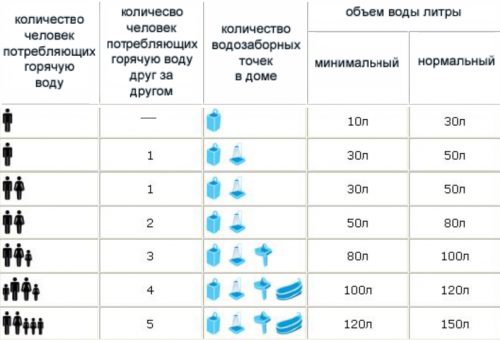
The key parameter of the heaters when selecting is the volume of the tank. "The more roomy - the better?" This statement is not always true, because to warm up an impressive amount of water, it takes a lot of time. Although you can give preference to a powerful unit, but in this case it will empty your pockets when paying for electricity.
How to determine the appropriate volume of the water heater? Because of its size will depend on the compactness of the device itself and the continuity of the flow of hot water.
The same model of the water heater is always available in several versions, ranging from the smallest to the largest tanks. But unlike flow-through types, where the pneumatic flow of the water passing through the device instantaneously heats up to the maximum temperature, the storage tank first fills the tank and only then happens temperature increase water in the tank. As it cools, the sensor starts the heating cycle cyclically, allowing the water to always remain at the required heat level.
Video review - how to choose a storage water heater, dimensions.,
Save on the volume or not?
According to statistics, a city resident uses every day from 100 to 400 liters of water, most of which are hot. Moreover, significant volume is spent ineffectively, inefficiently.

Naturally, each person's water consumption is strictly individual. One will be able to use the volume of the water heater to make a full bath, leaving some water to wash dishes or hands, but for another member of the family it will be necessary to wait a little to warm up the next portion of water.
But if you do not care at all saving water consumption and electricity, and the financial security and the potential of the electricity grid allow the use of a powerful heater, in this situation, purchase several appliances with capacity tanks of 200-300 liters.
Waiting time for water heating
The temperature level of hot water, set from the heater control panel, can be adjusted in the range from 30 to 80 degrees Celsius. But according to safety regulations, you need to fix it within 55-60 degrees to avoid injury from hot water.
Proceeding from the fact that the temperature of cold water in the summer months is about +15 degrees, and in winter +5, and comfortable for swimming is water with a temperature of about + 30 + 40 degrees, different volumes will warm up for an unequal time. For example, the volume of a water heater in 100 l warms up water to 60 degrees approximately in 5 hours.

As the consumption of hot water is gradually diluted by cold, continuously entering the tank. After mixing, 160 to 250 liters of heated water are formed. Undoubtedly, the true values are smaller, because with the decrease of hot water, the overall temperature indexes of the contents of the tank are reduced.
The volume of the water heater, consumed for different needs, varies depending on personal preferences. So, individually for kitchen necessities can approach small on volume heater on 5 l. It will allow you to rinse your hands and some dishes. If you do not save on water, a water heater with a tank of 20 liters will be suitable.
To use the shower will require a capacity of a tank of at least 50 liters, taking a bath - 80-150 liters. Therefore, the selection of capacity can be optimally coordinated with specialists who are guided by the personal needs of the user.

